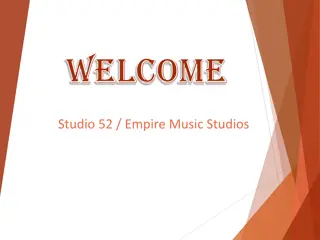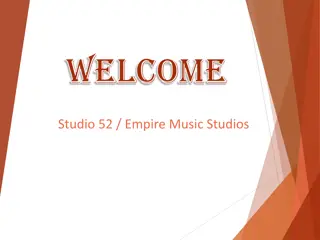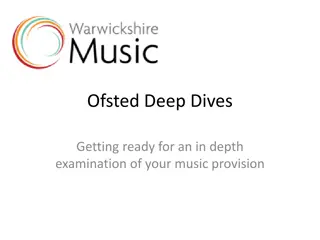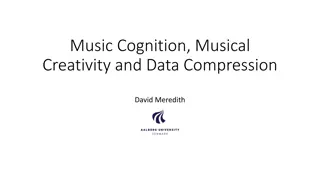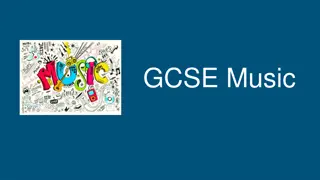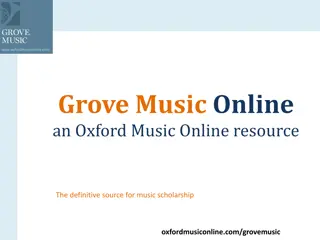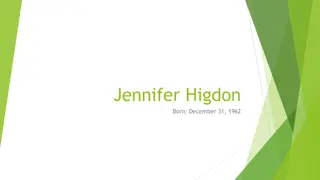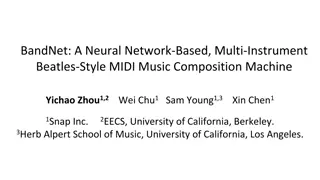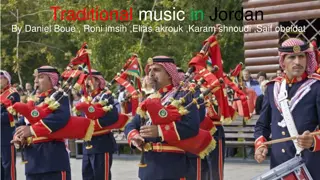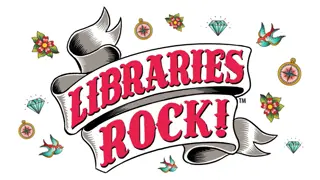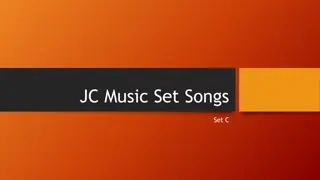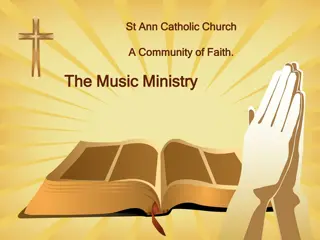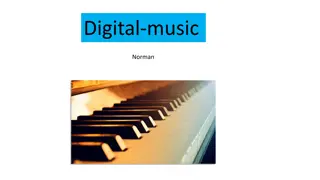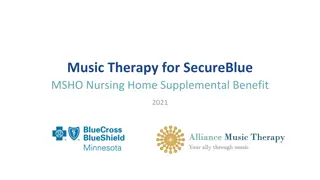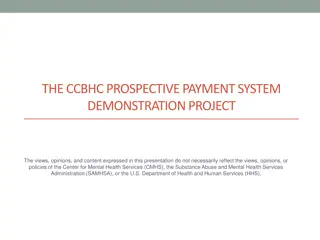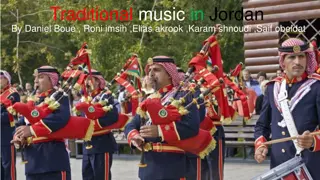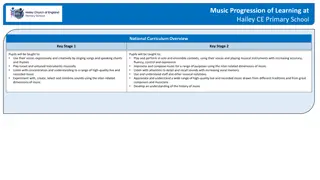
Explore the World of Music in the Music Department
Discover the exciting world of music in the Music Department, where you can perform with a group, create your own melodies, learn music notation, and appreciate music from different times and places. Develop your musical skills, creativity, and confidence through engaging lessons and activities.
Download Presentation

Please find below an Image/Link to download the presentation.
The content on the website is provided AS IS for your information and personal use only. It may not be sold, licensed, or shared on other websites without obtaining consent from the author. If you encounter any issues during the download, it is possible that the publisher has removed the file from their server.
You are allowed to download the files provided on this website for personal or commercial use, subject to the condition that they are used lawfully. All files are the property of their respective owners.
The content on the website is provided AS IS for your information and personal use only. It may not be sold, licensed, or shared on other websites without obtaining consent from the author.
E N D
Presentation Transcript
Music Department Music Department Prospective Year 7
The Music Department *Keyboards *6 string Guitars *Drum kits *Singing *Bass Guitars *Percussion Instruments *Cubase sequences *Muse score Notation app
What will you do in music lessons? 1. Perform music -Sing as apart of a group, play a range of different instruments 2. Create Music -Compose and improvise, rhythms and melodies 3. Notation -Use music notation to create and perform music 4. Listening and Appraising -Listen to music from different times and different places. (Use musical terms to describe, evaluate and compare) 5. Explore musical relationships (between music and outside music)
Perform music (sing as apart of a group, Perform music (sing as apart of a group, play a range of different instruments) play a range of different instruments) Musical performance is the main way of developing musicians and musicianship. Through the performance of music, students develop confidence, self-discipline, and the ability to work with others. They see themselves as a relevant part of their world and integrate prior knowledge and personal experiences into a variety of endeavors. The music they perform or study often becomes an integral part of their personal musical repertoire.
Create Music (Compose and improvise, Create Music (Compose and improvise, rhythms and melodies) rhythms and melodies) Composing and improvising provide students with the opportunity to symbolically represent ideas in music. To gain a unique insight into the form and structure of music and, at the same time, help them to develop their creativity. Working within the form and structure of music, students gain the ability to problem-solve and apply their basic knowledge using higher level thinking skills. These skills are enhanced through technology.
Notation Notation Use music notation Use music notation Learning to read and notate music gives students skills with which to explore music independently and with others. Reading music promotes higher level thinking skills through translation of symbols and serves as a means of communication throughout the world. A firm grounding in this standard lays the foundation for lifelong learning.
Listen to music from different times and Listen to music from different times and different places. different places. Use musical terms to describe, evaluate and compare. Listening to, analyzing, and evaluating music are important building blocks of musical learning. These skills expand musical appreciation, expression, and the justification of musical preferences, leading to knowledgeable consumers and supporters of music. They also provide a foundation for critical thinking.
Explore musical relationships. Explore musical relationships. Understand relationships between music, the other arts, and disciplines outside the arts. Students will understand music in relation to history and culture.
Learn to read music so you can: Learn to read music so you can: *Play chords and melodies on the keyboard *Sing *Play chords and melodies on the guitar *Play drum kit 8 beat patterns
Learn to create your own music: Learn to create your own music: *Using Apps, Cubase, MuseScore and BeepBox *Using the drum kit, guitar and keyboard and any other instrument you can play.
Listen to and analyse music Listen to and analyse music *From different parts of the world From different times From different styles and genres
Examples of Student work Examples of Student work
Hall Mead Music Department Hall Mead Music Department
Book Up Instrumental/Vocal Music Book Up Instrumental/Vocal Music Lessons Lessons Click link to find out about instrumental and vocal music lessons How playing an instrument benefits your brain Further information and book lesson. Music Pencil Stock Illustrations 11,603 Music Pencil Stock Illustrations, Vectors Clipart - Dreamstime
Links Links https://lh5.googleusercontent.com/i-J5UmcfY1bDZKZuw9MBpPSzK4beeKDGa6Fw9wS5V99QHBvYc3qc9nvTGy6F3I0qg3giu655UcFPoXG3fE_NHa6u5y5p17Yyg1m0j_zdmgNapfs-m3-Cg75uPu-yC5_qMa9zRRXSUNtDoaS5NmRX https://lh5.googleusercontent.com/hK9oiffO2I9kMtjaM-r03eiPFEbovsMSiVJ1TD3wnZPL0Df9Km_0VMKkHWIZNa8NeGqLJE3PfzWNQjIkMKe5xSQsa4Z2Dn2WM0Qf-iqgrX-gCcL8tEo2GYgxtY5Sa9iAKCA4h7emkpXfjOoFv6sc


